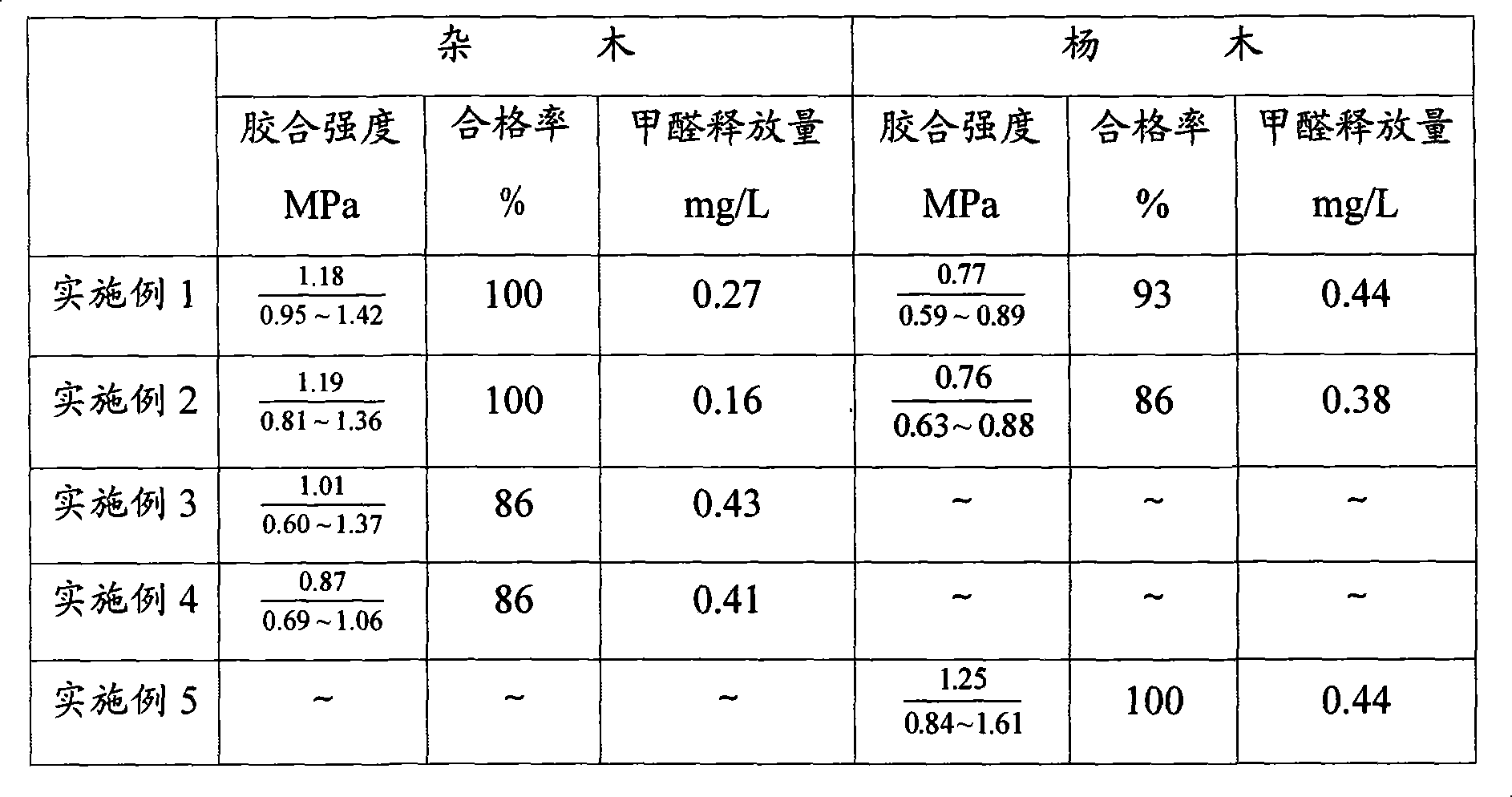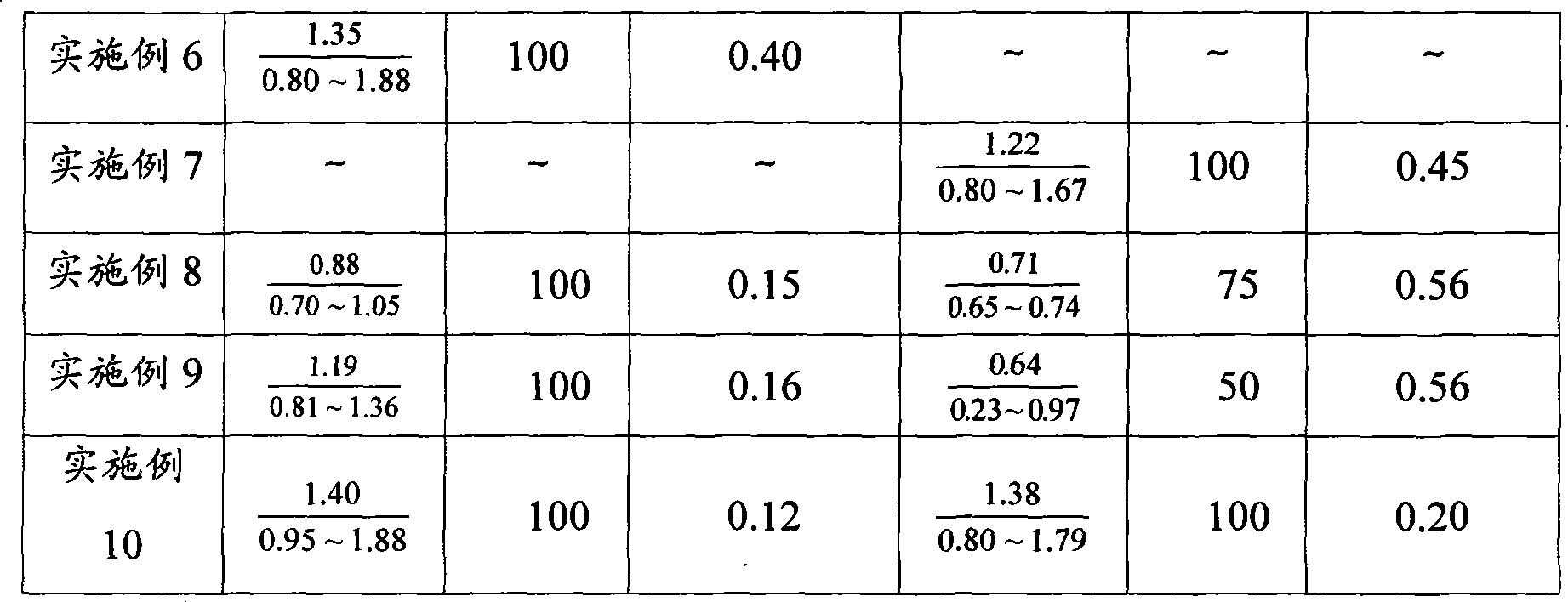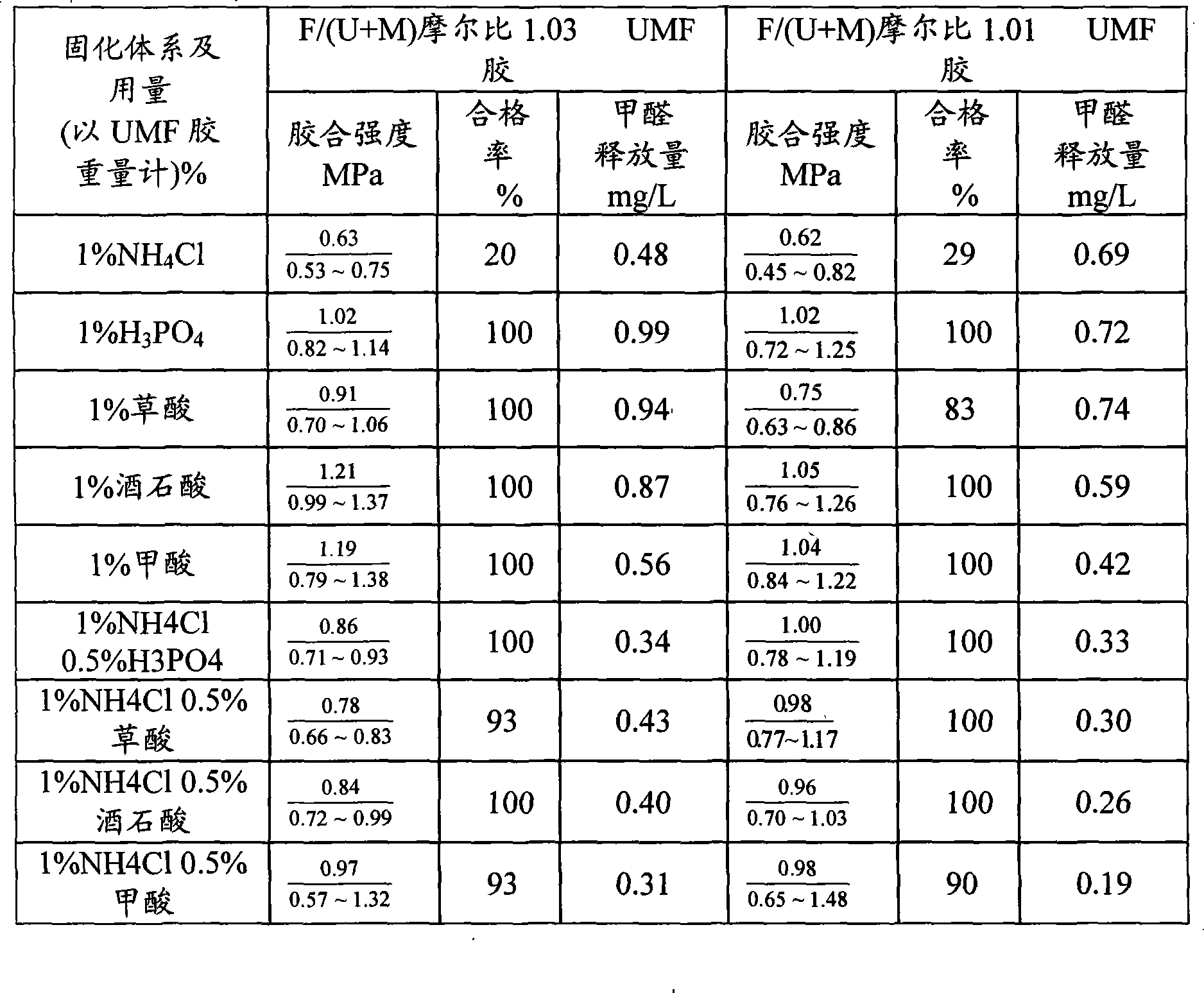Method for manufacturing E0 level wood veneer
A technology of plywood and preparation steps, applied in the direction of joining of wooden veneers, chemical instruments and methods, adhesives, etc., to achieve the effect of strengthening the bonding performance, improving the structure, and improving the water resistance
- Summary
- Abstract
- Description
- Claims
- Application Information
AI Technical Summary
Benefits of technology
Problems solved by technology
Method used
Image
Examples
Embodiment 1
[0015] Example 1 (Preparation of three plywood)
[0016] The first step: Add 320g of formaldehyde solution, the first batch of melamine 7g, and the first batch of urea 108g into the reactor in a 500ml four-necked flask, adjust the pH to 7.5 with triethanolamine, heat up to 85°C, and react for 40 minutes.
[0017] Step 2: Adjust the pH to 4.8 with 50% formic acid, and react to the desired viscosity at 90°C.
[0018] The third step: adjust the pH to 6.5 with triethanolamine, add 7 g of the second batch of melamine and 42 g of the second batch of urea, and react at 90°C for 50 min.
[0019] The fourth step: adjust the pH value to 7.5 with triethanolamine, add 35g of the third batch of melamine, and react at 80°C for 40 minutes.
[0020] Step 5: Cool down to 70°C, add 55g of the third batch of urea, continue the reaction at 50°C for 30 minutes, and cool and discharge. Test its performance separately, and the results are listed in Table 1.
[0021] The sixth step: take 60g of the prepa...
Embodiment 2
[0023] Example 2 (Preparation of three plywood)
[0024] The first step: add 320g formaldehyde solution, the first batch of melamine 8g, and the first batch of urea 108g into the reactor in a 500ml four-necked flask, adjust the pH value to 8.0 with triethanolamine, raise the temperature to 85°C, and react for 50min.
[0025] Step 2: Adjust the pH to 5.2 with 50% formic acid, and react to the desired viscosity at 90°C.
[0026] The third step: adjust the pH to 6.7 with triethanolamine, add 8 g of the second batch of melamine and 42 g of the second batch of urea, and react at 90°C for 50 min.
[0027] The fourth step: adjust the pH value to 8.0 with triethanolamine, add 33 g of the third batch of melamine, and react at 90°C for 40 minutes.
[0028] Step 5: Cool down to 70°C, add 60g of the third batch of urea, continue to react at 55°C for 30 minutes, and cool the material to discharge. Test its performance separately, and the results are listed in Table 1.
[0029] The sixth step: ...
Embodiment 3
[0031] Example 3 (Preparation of three plywood)
[0032] Step 1: Add 320g of formaldehyde solution, 9g of first batch of melamine, and 108g of first batch of urea into the reactor in a 500ml four-necked flask, adjust pH to 8.5 with triethanolamine, heat up to 90°C, and react for 40-50min.
[0033] Step 2: Adjust the pH to 5.5 with 50% formic acid, and react to the desired viscosity at 90°C.
[0034] The third step: adjust the pH value to 6.2 with triethanolamine, add the second batch of melamine and 42 g of the second batch of urea with the same quality as the first batch, and react at 90°C for 50 minutes.
[0035] The fourth step: adjust the pH value to 8.0 with triethanolamine, add 32 g of the third batch of melamine, and react at 90°C for 40 minutes.
[0036] Step 5: Cool down to 70°C, add 63g of the third batch of urea, continue the reaction at 60°C for 20 minutes, and cool and discharge. Test its performance separately, and the results are listed in Table 1.
[0037] The sixt...
PUM
 Login to View More
Login to View More Abstract
Description
Claims
Application Information
 Login to View More
Login to View More - R&D
- Intellectual Property
- Life Sciences
- Materials
- Tech Scout
- Unparalleled Data Quality
- Higher Quality Content
- 60% Fewer Hallucinations
Browse by: Latest US Patents, China's latest patents, Technical Efficacy Thesaurus, Application Domain, Technology Topic, Popular Technical Reports.
© 2025 PatSnap. All rights reserved.Legal|Privacy policy|Modern Slavery Act Transparency Statement|Sitemap|About US| Contact US: help@patsnap.com



